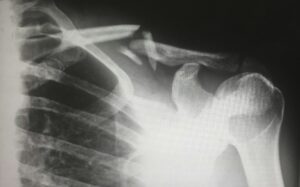Table of Contents
ToggleHow Serious Does a Collision Have to Be for Airbags to Deploy?

Congress passed a law in 1991 that made airbags mandatory in all new cars sold after September 1, 1998. Since that time, manufacturers have refined airbags as well as the sensors that determine when they deploy.
Airbags have produced significant results. They reduce driver fatalities in car accidents by 29% and front passenger fatalities by 32%. From 1987 to 2017, the National Highway Traffic Safety Administration estimates that frontal airbags saved over 50,000 lives.
Read on to learn how airbags work and what kinds of collisions will cause airbags to deploy.
How Do Airbag Systems Work?
Cars made after 1999 have airbags packed into the steering wheel for the driver and the dashboard for the front seat passenger. These bags connect to an inflator and a sensor. When the sensor detects a certain type of crash, it sends an electrical signal to the inflator.
Two chemicals get mixed inside the inflator. Sodium azide and potassium nitrate react almost instantly to produce nitrogen gas. Airbags use nitrogen gas because it is non-toxic and inert, meaning it will not catch on fire or react with other materials.
This entire inflation process takes place in between 15 and 50 milliseconds. This means only 0.015 to 0.050 seconds pass between the time the sensor detects the collision and the airbag inflates.
The airbag inflates quickly enough to catch your head and body before they hit anything hard. But it also deflates quickly to dissipate your energy and slow your body gently.
Which Collisions Trigger Airbag Deployment?
The sensors used to deploy the airbags include accelerometers. An accelerometer detects acceleration and deceleration. When the sensor decelerates rapidly, a mechanical contact in the sensor closes a circuit. The circuit energizes the inflator, causing the airbag to deploy.
Car manufacturers configure the sensors to detect both the speed and direction at impact. Both of these will determine whether the airbag deploys.
The Speed of the Vehicle at Impact
The speed of a collision determines the amount of energy involved in the crash. Higher speeds mean more energetic collisions. And more energetic collisions cause more severe injuries and damage.
How much force do you need to deploy the airbag? Manufacturers design airbags to deploy for moderate to severe crashes. They understand that minor crashes usually do not involve the energies needed to injure you. By tuning the sensors to deploy only in moderate to severe crashes, the manufacturers also save you the cost of having your airbag replaced after a minor fender-bender.
At What Speed Do Airbags Deploy?
If you are wondering how fast do you have to be going for airbags to deploy, most manufacturers program the sensors to deploy the airbags when you collide with something at 10-16 miles per hour or faster. Crashes at these speeds involve enough force that you could suffer an injury from hitting the dashboard or steering wheel.
The triggering speed depends on one additional factor. You might view the seat belt sensors as an unnecessary annoyance. But your car’s computer uses the seat belt sensors to determine when to deploy the airbags.
If you are not wearing a seat belt, the airbag will inflate toward the lower end of the range at 10-12 miles per hour. If you are wearing a seat belt, the airbag will inflate toward the higher end of the range at 16 miles per hour.
What Else Causes Airbags to Deploy?
The sensors also use the direction of the collision to determine when to deploy the airbags. Auto manufacturers orient the sensors to deploy the airbag in a head-on collision.
Will Airbags Deploy in a Head-on Collision?
Yes. In a front-end collision, your body will keep moving forward upon impact. As your seat belt restrains your lap and shoulder, your back and neck will bend. Your head will swing forward toward the steering wheel or dashboard. Deploying the airbag in these crashes will reduce the chances of head injury.
This also means that the front airbag will usually not deploy in a side-impact or rear-end collision. But because of the direction of the collision, an airbag would not help much in these crashes anyway.
Contact a Car Accident Lawyer for Help After a Collision Involving Airbag Deployment
While airbags significantly reduce driver and passenger fatalities, you may still suffer injuries in a car accident. If you’ve suffered injuries in a collision where your airbags deployed, you may be entitled to compensation to cover your medical bills, lost wages, and more. Contact an experienced personal injury lawyer for help after a collision to determine your legal options.
Contact Our Car Accident Law Firm in Los Angeles, CA
If you were injured in an accident in Los Angeles, CA or you lost a loved one and you need legal assistance, please contact us to schedule a free consultation. One of our Los Angeles car accident lawyers at M&Y Personal Injury Lawyers will get in touch with you soon.
M&Y Personal Injury Lawyers – Los Angeles Office
4929 Wilshire Blvd Suite 960,
Los Angeles, CA 90010
866-864-5477



